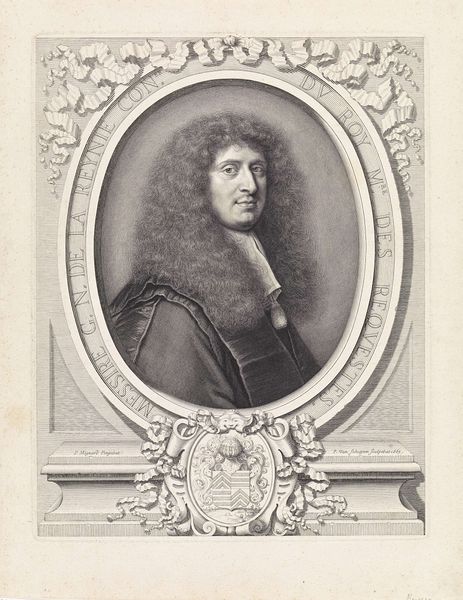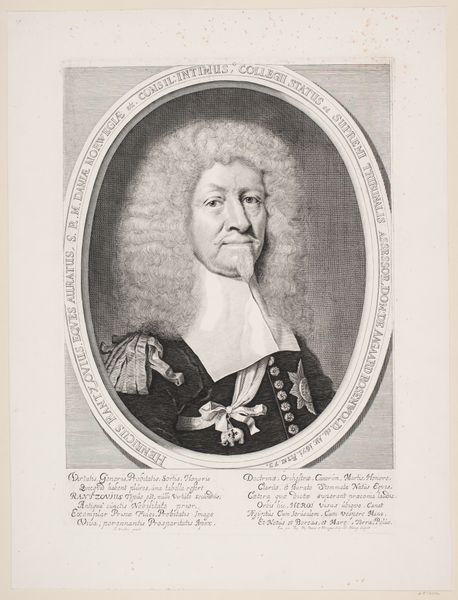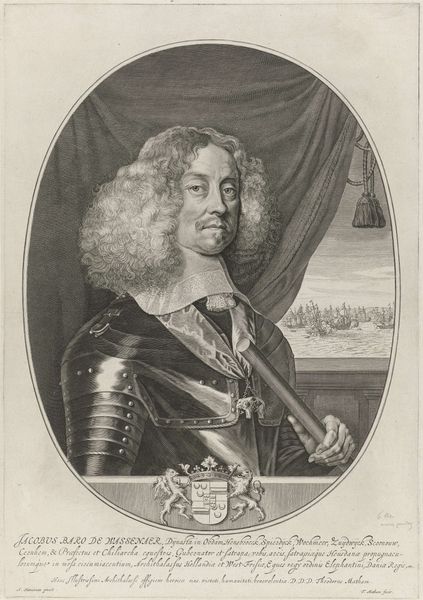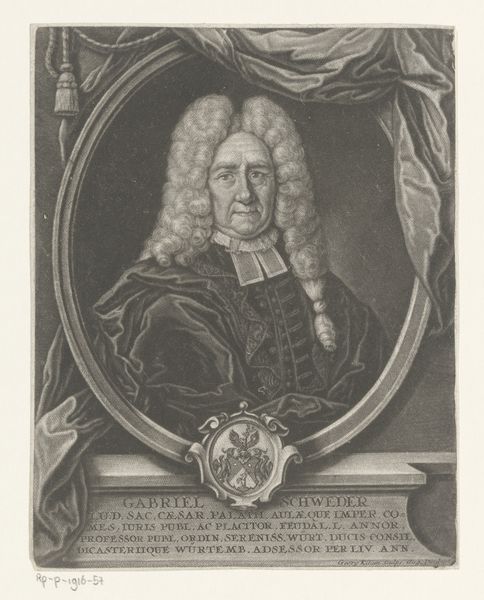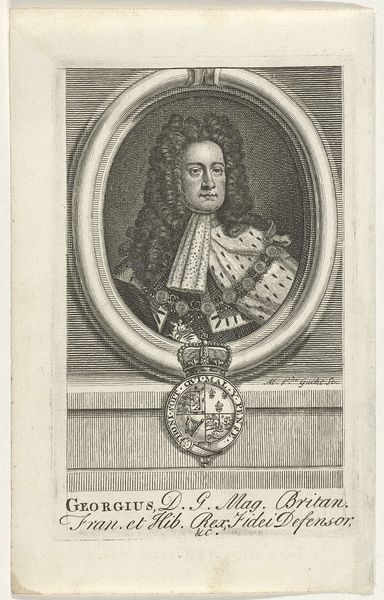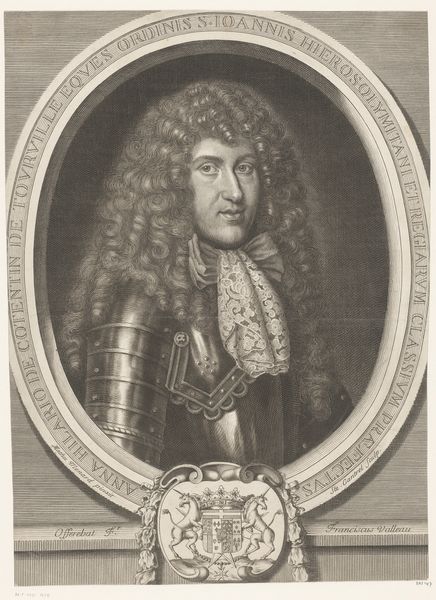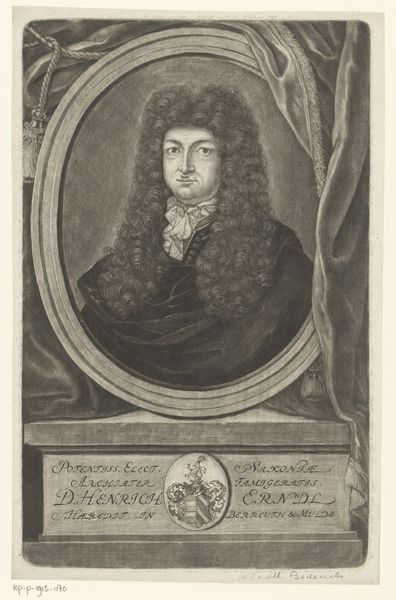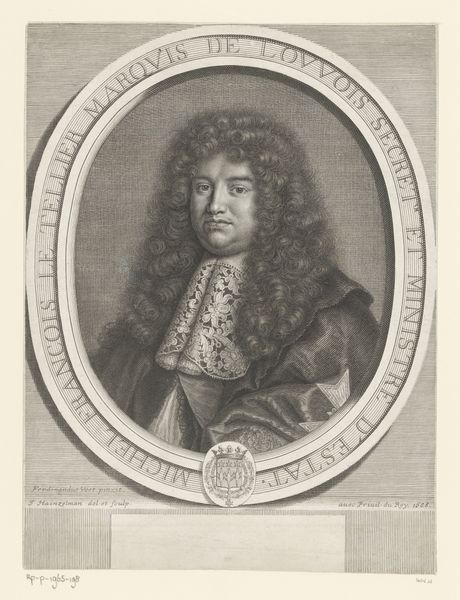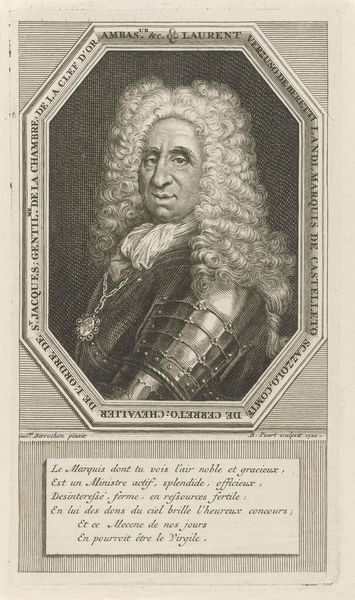
metal, engraving
#
portrait
#
baroque
#
metal
#
old engraving style
#
caricature
#
portrait reference
#
19th century
#
engraving
Dimensions: height 395 mm, width 255 mm
Copyright: Rijks Museum: Open Domain
Curator: At first glance, I sense a remarkable level of control and calculation emanating from this piece. The engraving is precise, meticulous, and formal. Editor: Here we have Hendrik Bary's "Portret van Hieronymus van Beverningk," dating roughly from 1670 to 1707. It’s currently housed here at the Rijksmuseum. Bary worked primarily with metal and this piece employs the engraving technique to render Van Beverningk. Curator: Indeed. Think about the deliberate choice of rendering Van Beverningk encased in an oval frame intertwined with laurel leaves, symbolic of triumph and status. And below, that rather fierce heraldic shield. Can we unpack this imagery? What do these recurring emblems mean in relation to Van Beverningk's position in Dutch society at the time? Editor: Van Beverningk was an important diplomat and statesman, and the engraving presents him accordingly. Look closely at the beaver on the heraldic shield. In the context of Dutch trading history, the beaver symbolized industriousness. Consider too that in emblem books of the period, it was often used to denote wisdom. The olive branches encircling the portrait reinforce his efforts toward peace as a negotiator. It suggests how Van Beverningk wished to be remembered. Curator: So the symbols function as both a personal identifier and a broader commentary on civic virtues, interesting! And considering the details inscribed below the portrait, are those praises, like poems or affirmations to the represented character? I wonder, how does this intertwine with issues of political power and historical legacy within the Republic at that time? Were these common practice? Editor: Exactly. You can think of these written components as elaborate epitaphs cementing the achievements and reputation of Beverningk. Yes, this was common within this portraiture style of the time, particularly for figures of considerable societal status. I read these emblems not just as celebration but perhaps an act of conscious myth-making. Curator: Myth-making, precisely. It encourages us to consider how those in power consciously shaped public memory of their contributions and, consequently, reinforces structures of inequality. Thank you for providing some new ways to approach it. Editor: It all points toward the intriguing ways symbols speak volumes, revealing cultural memory, and solidifying lasting narratives across time.
Comments
No comments
Be the first to comment and join the conversation on the ultimate creative platform.
